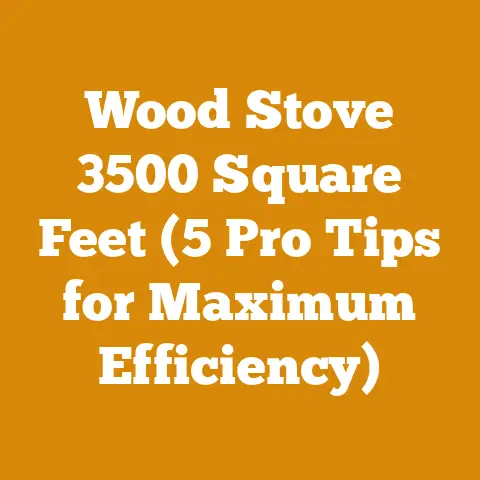Attach Deck Roof to House (Pro Wood Joinery Tips for Gable Frames)
Building a deck is more than just adding square footage; it’s about extending your living space, creating a place for family memories, and enhancing the value of your home. I remember when my own kids were little, we spent countless summer evenings on our deck, grilling, playing games, and simply enjoying each other’s company. It’s a space that holds a special place in my heart, and I’m sure many of you feel the same way about your own decks, or the ones you dream of building.
One of the most rewarding, yet potentially daunting, aspects of deck construction is attaching the deck roof to the house, especially when dealing with gable frames. It’s a critical step that requires careful planning, solid wood joinery skills, and a good understanding of the costs involved. Today, I’m going to walk you through the process, focusing on pro wood joinery tips for gable frames and, more importantly, breaking down the costs associated with this project. We’ll dive into materials, labor, and even those pesky little expenses that often get overlooked. My aim is to equip you with the knowledge and insights you need to budget effectively and ensure your deck roof attachment is both structurally sound and visually appealing. Let’s get started!
Attaching a Deck Roof to a House (Pro Wood Joinery Tips for Gable Frames): A Cost-Conscious Guide
Attaching a deck roof to your house, particularly when incorporating gable frames, is a significant undertaking. It’s crucial to understand the intricacies of wood joinery and the associated costs to ensure a successful and budget-friendly project. This guide will delve into the specific techniques and cost factors involved, providing you with the information needed to make informed decisions.
Understanding the Scope and Complexity
Before we dive into the nitty-gritty of joinery and costs, let’s acknowledge the variable factors that can significantly impact your project’s budget and timeline.
- Wood Species: The type of wood you choose for your deck and roof structure will heavily influence the material cost. Cedar, redwood, pressure-treated lumber, and composite decking all have different price points and structural properties.
- Location and Accessibility: Your geographic location will affect the cost of materials and labor. Additionally, the ease of access to your property can increase labor costs if materials need to be carried long distances or special equipment is required.
- Gable Frame Design: The complexity of your gable frame design will impact the amount of lumber needed and the labor hours required for construction. A simple gable is far less expensive than a multi-gabled or intricately designed roof.
- Permits and Inspections: Don’t forget to factor in the cost of building permits and inspections. These fees vary widely depending on your local building codes and regulations. I can’t stress enough how important it is to get the permits as it will save you a lot of headaches and money in the long run.
Wood Joinery Techniques for Gable Frames: The Heart of the Matter
The strength and stability of your deck roof depend heavily on the quality of your wood joinery. For gable frames, several key joinery techniques are essential.
1. Understanding Gable Frame Anatomy
A gable frame typically consists of rafters, a ridge board, and potentially collar ties or rafter ties. The connection points between these components are where your joinery skills will be put to the test.
2. Essential Joinery Techniques
- Birdsmouth Cuts: This is a crucial cut on the rafter that allows it to sit securely on the top plate of the house. The angle and depth of the birdsmouth must be precise to ensure proper weight distribution and prevent the roof from sagging.
- Calculating Birdsmouth Depth: The depth of the birdsmouth cut should typically be no more than one-third of the rafter’s thickness. This maintains the structural integrity of the rafter.
- Ridge Board Connection: The rafters connect to the ridge board at the peak of the gable. This connection should be strong and secure, often achieved with angled cuts and fasteners.
- Angled Cuts: Precisely angled cuts ensure a tight fit between the rafters and the ridge board.
- Collar Ties/Rafter Ties: These horizontal members connect opposing rafters, preventing them from spreading apart under load.
- Placement: Collar ties are typically placed in the upper third of the rafter span, while rafter ties are located at the bottom, near the top plate.
- Fastening Methods: Using the right fasteners is critical for strong and durable joints.
- Structural Screws: These screws are designed for high load-bearing applications and offer superior holding power compared to regular screws. I prefer using structural screws for critical connections in my deck roof projects.
- Construction Adhesives: Applying construction adhesive to the joints before fastening can significantly increase their strength.
- Metal Connectors: Hurricane ties and rafter ties provide additional reinforcement and help resist uplift forces from wind.
3. Gable Frame Assembly Tips
- Accurate Measurements: Precise measurements are paramount. Use a quality measuring tape and a speed square to ensure accurate cuts.
- Templates: Create templates for repetitive cuts, such as birdsmouths and rafter angles. This will save time and ensure consistency.
- Dry Fit: Before permanently fastening anything, dry-fit all the components to ensure they fit together properly. This allows you to make adjustments as needed.
- Leveling: Ensure the ridge board is perfectly level before attaching the rafters. This will ensure the roof is straight and even.
Cost Breakdown: A Deep Dive into the Numbers
Now, let’s get down to the brass tacks and discuss the costs associated with attaching a deck roof to your house with gable frames. I’ve broken down the costs into several key categories: materials, labor, tools, permits, and miscellaneous expenses.
1. Material Costs
-
Lumber: The cost of lumber will depend on the species, grade, and quantity you need.
- Pressure-Treated Lumber: Typically used for the main support structure, pressure-treated lumber can range from \$3 to \$8 per linear foot, depending on the grade and dimensions. As of October 2024, I’ve seen the price of a 2x8x12 pressure-treated board fluctuate between \$24 and \$60, with the lower end being standard grade and the higher end being select grade.
- Cedar or Redwood: These aesthetically pleasing and naturally rot-resistant woods are often used for the exposed portions of the roof structure. Expect to pay \$8 to \$15 per linear foot. During my recent trip to a lumber yard, I noted that a 1x6x8 cedar board was priced around \$12, while a similar redwood board was closer to \$18.
- Framing Lumber (SPF): For non-exposed framing components, Spruce-Pine-Fir (SPF) lumber is a cost-effective option, typically ranging from \$2 to \$5 per linear foot. I recently purchased a bundle of 2x4x8 SPF boards for a small shed project, and they averaged around \$3.50 each.
- Plywood or OSB Sheathing: Used to cover the roof frame before applying roofing materials, plywood or OSB sheathing typically costs \$20 to \$40 per sheet.
- Estimating Lumber Needs: To accurately estimate your lumber needs, create a detailed cut list based on your gable frame design. Consider waste and add an extra 10% to your total. I always add a bit extra for mistakes and unexpected changes in my design.
-
Roofing Materials: The type of roofing material you choose will significantly impact the cost.
-
Asphalt Shingles: The most common and affordable option, asphalt shingles typically cost \$1.50 to \$4 per square foot installed. This cost can vary greatly depending on the quality of the shingles.
- Metal Roofing: Durable and long-lasting, metal roofing can range from \$8 to \$20 per square foot installed. I’ve seen metal roofing become increasingly popular due to its longevity and energy efficiency.
- Wood Shakes or Shingles: These provide a rustic and natural look but are more expensive, ranging from \$10 to \$30 per square foot installed.
- Calculating Roofing Material Needs: Determine the square footage of your roof and add an extra 10% for overlap and waste.
-
Fasteners: Don’t underestimate the cost of screws, nails, and connectors.
-
Structural Screws: Essential for strong connections, structural screws can cost \$0.50 to \$1 per screw.
- Nails: Framing nails and roofing nails are relatively inexpensive, costing around \$10 to \$20 per pound.
- Metal Connectors: Hurricane ties, rafter ties, and other metal connectors can add \$50 to \$200 to your total cost, depending on the size and complexity of your roof.
-
Other Materials:
-
Flashing: Used to prevent water intrusion, flashing typically costs \$2 to \$5 per linear foot.
- Sealant: Caulking and sealant are essential for weatherproofing and can cost \$5 to \$15 per tube.
- Gutter System: If you plan to install gutters, factor in an additional \$4 to \$10 per linear foot.
Example Material Cost Breakdown (Based on a 200 sq ft Roof):
Material Estimated Cost Pressure-Treated Lumber \$500 – \$1000 Roofing (Asphalt) \$300 – \$800 Fasteners \$100 – \$300 Flashing & Sealant \$50 – \$150 Total \$950 – \$2250
2. Labor Costs
If you’re not comfortable tackling the project yourself, you’ll need to hire a contractor. Labor costs can vary significantly depending on your location, the complexity of the project, and the contractor’s experience.
- Hourly Rates: General contractors typically charge \$50 to \$100 per hour.
- Project-Based Bids: Many contractors will provide a project-based bid, which includes all labor and materials.
- Estimating Labor Hours: A simple gable roof attachment on a 200 sq ft deck could take 20 to 40 hours of labor. Complex designs or challenging site conditions could increase this significantly.
- Cost-Saving Tip: Get multiple bids from different contractors to ensure you’re getting a fair price. I always recommend checking references and reviewing their past work.
3. Tool Costs
If you plan to DIY the project, you’ll need to have the right tools.
- Essential Tools:
- Chainsaw: For cutting lumber to size (if you’re milling your own or need to make significant adjustments). A decent chainsaw can cost \$200 to \$500.
- Circular Saw: Essential for making straight cuts in lumber and sheathing. A good circular saw can cost \$100 to \$300.
- Miter Saw: Ideal for making accurate angled cuts for rafters and other framing components. A miter saw can cost \$200 to \$500.
- Drill/Driver: Needed for driving screws and drilling holes. A quality drill/driver combo can cost \$100 to \$300.
- Hammer: For driving nails. A good hammer costs around \$20 to \$50.
- Level: Essential for ensuring the roof is level and plumb. A level costs around \$20 to \$50.
- Measuring Tape: A quality measuring tape is a must-have. Expect to pay \$20 to \$50.
- Speed Square: For marking accurate angles and cuts. A speed square costs around \$10 to \$20.
- Safety Gear: Safety glasses, gloves, and a hard hat are essential for protecting yourself. Expect to spend \$50 to \$100 on safety gear.
- Rental Options: If you don’t want to purchase expensive tools, consider renting them from a local tool rental shop. Rental costs typically range from \$20 to \$50 per day per tool.
- Used Tools: Buying used tools can be a cost-effective way to save money. Check online marketplaces and local pawn shops for deals.
4. Permit Costs
Building permits are required for most deck roof projects. The cost of a permit will vary depending on your location and the size and complexity of the project.
- Typical Permit Fees: Permit fees can range from \$100 to \$500 or more.
- Inspection Fees: You’ll also need to factor in the cost of inspections, which can range from \$50 to \$100 per inspection.
- Avoiding Permit Issues: Always obtain the necessary permits before starting your project. Working without a permit can result in fines and delays. I’ve heard horror stories of homeowners being forced to tear down unpermitted structures.
5. Miscellaneous Expenses
Don’t forget to budget for miscellaneous expenses, such as:
- Waste Disposal: You’ll need to dispose of construction debris properly. Renting a dumpster can cost \$200 to \$500.
- Unexpected Costs: Always set aside a contingency fund for unexpected costs, such as hidden damage or unforeseen problems. I recommend setting aside at least 10% of your total budget for contingencies.
- Landscaping: After the project is complete, you may need to do some landscaping to restore the area around the deck.
Case Studies and Real-World Examples
To further illustrate the cost factors involved, let’s look at a few case studies of real-world deck roof attachment projects.
Case Study 1: Simple Gable Roof on a 150 sq ft Deck (DIY)
- Location: Rural Area, Midwest
- Wood Species: Pressure-Treated Lumber and Asphalt Shingles
- Labor: DIY
- Material Costs: \$800
- Tool Rental: \$100
- Permit: \$150
- Miscellaneous: \$50
- Total Cost: \$1100
This homeowner was able to save money by doing the work themselves and using affordable materials. They also kept the design simple to minimize labor and material costs.
Case Study 2: Complex Gable Roof on a 300 sq ft Deck (Contractor)
- Location: Suburban Area, East Coast
- Wood Species: Cedar and Metal Roofing
- Labor: Contractor
- Material Costs: \$4000
- Labor Costs: \$6000
- Permit: \$300
- Miscellaneous: \$200
- Total Cost: \$10,500
This homeowner opted for high-end materials and hired a contractor to handle the construction. The complex gable design and high labor costs significantly increased the overall project cost.
Case Study 3: Budget-Conscious Roof on a 200 sq ft Deck
- Location: Urban Area, West Coast
- Wood Species: Mix of Pressure-Treated Lumber and Reclaimed Wood
- Labor: DIY with Assistance from Friends
- Material Costs: \$750
- Tool Purchase (Used): \$350
- Permit: \$200
- Miscellaneous: \$100
- Total Cost: \$1400
This homeowner was able to keep costs down by using reclaimed wood, purchasing used tools, and enlisting the help of friends.
Tips for Cost Optimization and Budget Management
Here are some practical tips for optimizing costs and managing your budget when attaching a deck roof to your house:
- Plan Carefully: A well-thought-out plan is essential for staying on budget. Create detailed drawings, calculate material needs accurately, and anticipate potential challenges.
- Shop Around: Get quotes from multiple suppliers and contractors. Compare prices and negotiate when possible.
- Consider Alternative Materials: Explore alternative materials that can save you money without sacrificing quality. For example, using composite decking instead of cedar can reduce maintenance costs in the long run.
- DIY When Possible: If you’re comfortable with DIY, tackle as much of the project as you can yourself. This can save you a significant amount on labor costs.
- Prioritize Quality: While it’s important to save money, don’t sacrifice quality. Using cheap materials or cutting corners on construction can lead to problems down the road.
- Secure Your Lumber Early: Lumber prices are notoriously volatile. When you have a solid estimate of the materials you need, try to secure your lumber early to avoid price increases.
- Salvage Materials: Look for opportunities to salvage materials from other projects or demolition sites. Reclaimed wood can add character to your deck and save you money.
- Be Flexible: Be prepared to make adjustments to your plan as needed. Unexpected challenges can arise, and you may need to modify your design or materials to stay on budget.
- Phase the Project: If your budget is tight, consider phasing the project. For example, you could build the deck frame one year and add the roof the following year.
- Track Your Expenses: Keep track of all your expenses to ensure you’re staying on budget. Use a spreadsheet or budgeting app to monitor your spending.
Formulas and Calculations
Here are some relevant calculations and formulas that can help you estimate material needs and costs:
- Roof Area: Calculate the area of your roof by multiplying the length by the width. Add extra for overhangs and waste.
- Rafter Length: Use the Pythagorean theorem (a² + b² = c²) to calculate the length of your rafters.
- Board Feet: Calculate the volume of lumber in board feet using the formula: (Thickness (inches) x Width (inches) x Length (feet)) / 12.
- Asphalt Shingle Coverage: Asphalt shingles typically cover 100 square feet per bundle.
- Estimating Fastener Needs: Consult fastener manufacturers’ guidelines for recommended spacing and quantities.
Industry Benchmarks and Statistical Data
Here are some current industry benchmarks and statistical data related to deck and roofing costs:
- Average Cost of a Deck: According to HomeAdvisor, the average cost of building a deck in 2024 ranges from \$4,000 to \$11,000.
- Average Cost of a Roof: The national average cost to install a new roof is around \$8,000, according to Angi.
- Lumber Price Trends: Lumber prices have fluctuated significantly in recent years. Stay up-to-date on current lumber prices by checking resources like Random Lengths and the National Association of Home Builders.
- Regional Cost Variations: Costs can vary significantly depending on your location. Check local cost guides and consult with local contractors to get accurate estimates.
Challenges Faced by Small-Scale Loggers and Independent Wood Processors
For those of you who are small-scale loggers or independent wood processors, attaching a deck roof to a house can be an opportunity to showcase your skills and provide unique, locally sourced materials. However, you also face unique challenges:
- Competition: Competing with large lumber mills can be difficult. Focus on providing high-quality, specialty woods that are not readily available elsewhere.
- Regulations: Navigating forestry regulations and obtaining the necessary permits can be time-consuming and expensive.
- Equipment Costs: Investing in logging and milling equipment can be a significant expense. Consider leasing equipment or partnering with other small-scale operators to share costs.
- Marketing: Effectively marketing your products and services is essential for attracting customers. Utilize online marketplaces, social media, and local trade shows to reach potential buyers.
- Sustainable Practices: Emphasize sustainable logging practices to appeal to environmentally conscious customers.
Actionable Takeaways and Next Steps
Attaching a deck roof to your house with gable frames is a complex but rewarding project. By understanding the wood joinery techniques, carefully planning your budget, and optimizing costs, you can create a beautiful and functional outdoor living space that will enhance your home for years to come.
Here are some actionable takeaways and next steps:
- Assess Your Skills: Determine your comfort level with DIY and decide whether you need to hire a contractor.
- Develop a Detailed Plan: Create detailed drawings, calculate material needs, and obtain the necessary permits.
- Shop Around for Materials and Labor: Get quotes from multiple suppliers and contractors.
- Set a Realistic Budget: Account for all costs, including materials, labor, tools, permits, and miscellaneous expenses.
- Start Building: Once you have a plan and a budget, it’s time to start building. Follow your plan carefully and don’t be afraid to ask for help when needed.
Remember, building a deck roof is a marathon, not a sprint. Take your time, do your research, and enjoy the process. The end result will be a beautiful and functional outdoor living space that you and your family will enjoy for years to come.
And as I always say, measure twice, cut once! Happy building!






